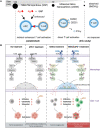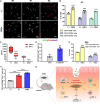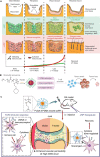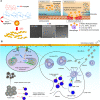Recent applications of immunomodulatory biomaterials for disease immunotherapy
- PMID: 37324799
- PMCID: PMC10191059
- DOI: 10.1002/EXP.20210157
Recent applications of immunomodulatory biomaterials for disease immunotherapy
Abstract
Immunotherapy is used to regulate systemic hyperactivation or hypoactivation to treat various diseases. Biomaterial-based immunotherapy systems can improve therapeutic effects through targeted drug delivery, immunoengineering, etc. However, the immunomodulatory effects of biomaterials themselves cannot be neglected. In this review, we outline biomaterials with immunomodulatory functions discovered in recent years and their applications in disease treatment. These biomaterials can treat inflammation, tumors, or autoimmune diseases by regulating immune cell function, exerting enzyme-like activity, neutralizing cytokines, etc. The prospects and challenges of biomaterial-based modulation of immunotherapy are also discussed.
Keywords: biomaterials; disease treatment; immunomodulatory effect; immunotherapy.
© 2022 The Authors. Exploration published by Henan University and John Wiley & Sons Australia, Ltd.
Conflict of interest statement
The authors declare no conflict of interest.
Figures








References
Publication types
LinkOut - more resources
Full Text Sources
